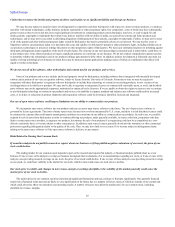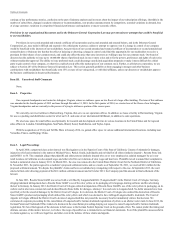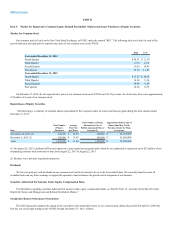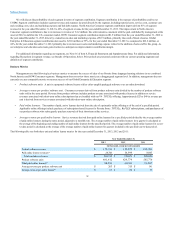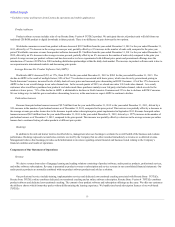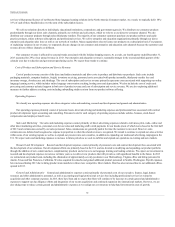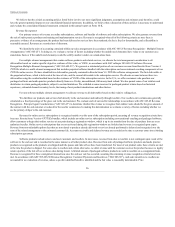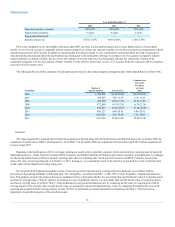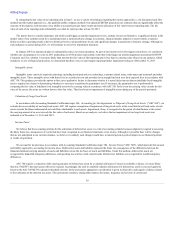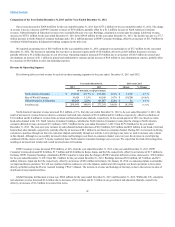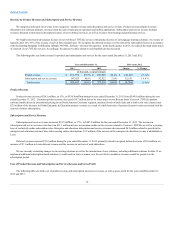Rosetta Stone 2013 Annual Report Download - page 37
Download and view the complete annual report
Please find page 37 of the 2013 Rosetta Stone annual report below. You can navigate through the pages in the report by either clicking on the pages listed below, or by using the keyword search tool below to find specific information within the annual report.
Table of Contents
services with perpetual licenses of our Rosetta Stone language learning solutions in the North America Consumer market. As a result, we typically defer 10%-
35% of each of these bundled sales over the term of the subscription license.
We sell our solutions directly to individuals, educational institutions, corporations, and government agencies. We distribute our consumer products
predominantly through our direct sales channels, primarily our websites and call centers, which we refer to as our direct-to-consumer channel. We also
distribute our consumer products through select third-party retailers. The majority of our consumer customers purchase our product software and audio
practice products, online software subscriptions and professional services. We sell to enterprise and education organizations primarily through our direct
enterprise and education sales force as well as our network of resellers. Many organizations elect to license our products on a subscription basis. For purposes
of explaining variances in our revenue, we separately discuss changes in our consumer and enterprise and education sales channels because the customers and
revenue drivers of these channels are different.
Our consumer revenue is affected by seasonal trends associated with the holiday shopping season. As a result, our fourth quarter ended December 31,
2013 accounted for 29% of our annual revenue in 2013. Our enterprise and education revenue is seasonally stronger in the second and third quarters of the
calendar year due to education and government purchasing cycles. We expect these trends to continue.
Cost of product revenue consists of the direct and indirect materials and labor costs to produce and distribute our products. Such costs include
packaging materials, computer headsets, freight, inventory receiving, personnel costs associated with product assembly, third-party royalty fees and
inventory storage, obsolescence and shrinkage. The cost of subscription and service revenue primarily represents costs associated with supporting our online
language learning service, which includes online language conversation coaching, hosting costs and depreciation. We also include the cost of credit card
processing and customer technical support in both cost of product revenue and cost of subscription and service revenue. We are also exploring additional
measures to further address coaching costs including unbundling studio sessions from our product software offering.
We classify our operating expenses into three categories: sales and marketing, research and development and general and administrative.
Our operating expenses primarily consist of personnel costs, direct advertising and marketing expenses and professional fees associated with contract
product development, legal, accounting and consulting. Personnel costs for each category of operating expenses include salaries, bonuses, stock-based
compensation and employee benefit costs.
Our sales and marketing expenses consist primarily of direct advertising expenses related to television, print, radio, online and
other direct marketing activities, personnel costs for our sales and marketing staff, rental payments for our kiosks (most of which were closed in the first half
of 2013) and commissions earned by our sales personnel. Sales commissions are generally paid at the time the customer is invoiced. However, sales
commissions are deferred and recognized as expense in proportion to when the related revenue is recognized. We intend to continue to expand our sales activities
within some of our existing regions as well as to expand our presence into new countries, in addition to expanding our media and advertising campaigns in the
U.S. We expect sales and marketing expenses to increase in future periods as we seek to stabilize and expand our operations in existing and new markets.
Research and development expenses consist primarily of personnel costs and contract development fees associated with
the development of our solutions. Our development efforts are primarily based in the U.S. and are devoted to modifying and expanding our product portfolio
through the addition of new content and new complementary products and services to our language learning and reading solutions. We expect our investment in
research and development expenses to increase in future years as we deliver new products that will provide us with significant benefits in the future. In 2013
we restructured our product team, including the elimination of approximately seventy positions in our Harrisonburg, Virginia office and hiring personnel in
Austin, Texas and San Francisco, California. We also acquired Livemocha and gained additional product personnel in Seattle, Washington. Payroll expenses
have increased during 2013 due to hiring product team members in these more competitive labor markets. Rent has also increased due to our additional offices
opened in 2013.
General and administrative expenses consist primarily of personnel costs of our executive, finance, legal, human
resources and other administrative personnel, as well as accounting and legal professional services fees including professional service fees related to
acquisition and other corporate expenses. In 2013, there have been and we expect that there will continue to be increases to certain general and administrative
expenses to support our due diligence efforts and integration of our recent acquisitions and continued expansion into international markets. However, we are
also taking steps to reduce certain general and administrative expenses as we realign our cost structure to help fund investment in areas of growth.
34


